Mastering JavaScript in WordPress: Best Practices Guide

Mastering WordPress JavaScript Coding Standards: A Comprehensive Guide for Developers
JavaScript coding standards in WordPress are crucial for maintaining consistency, readability, and high-quality code, whether you are developing themes, plugins, or contributing to the core. These standards ensure that your JavaScript integrates seamlessly with PHP, HTML, and CSS and facilitate collaboration across diverse teams. Let’s dive into these standards, breaking them down with practical examples to make them accessible for all developers.
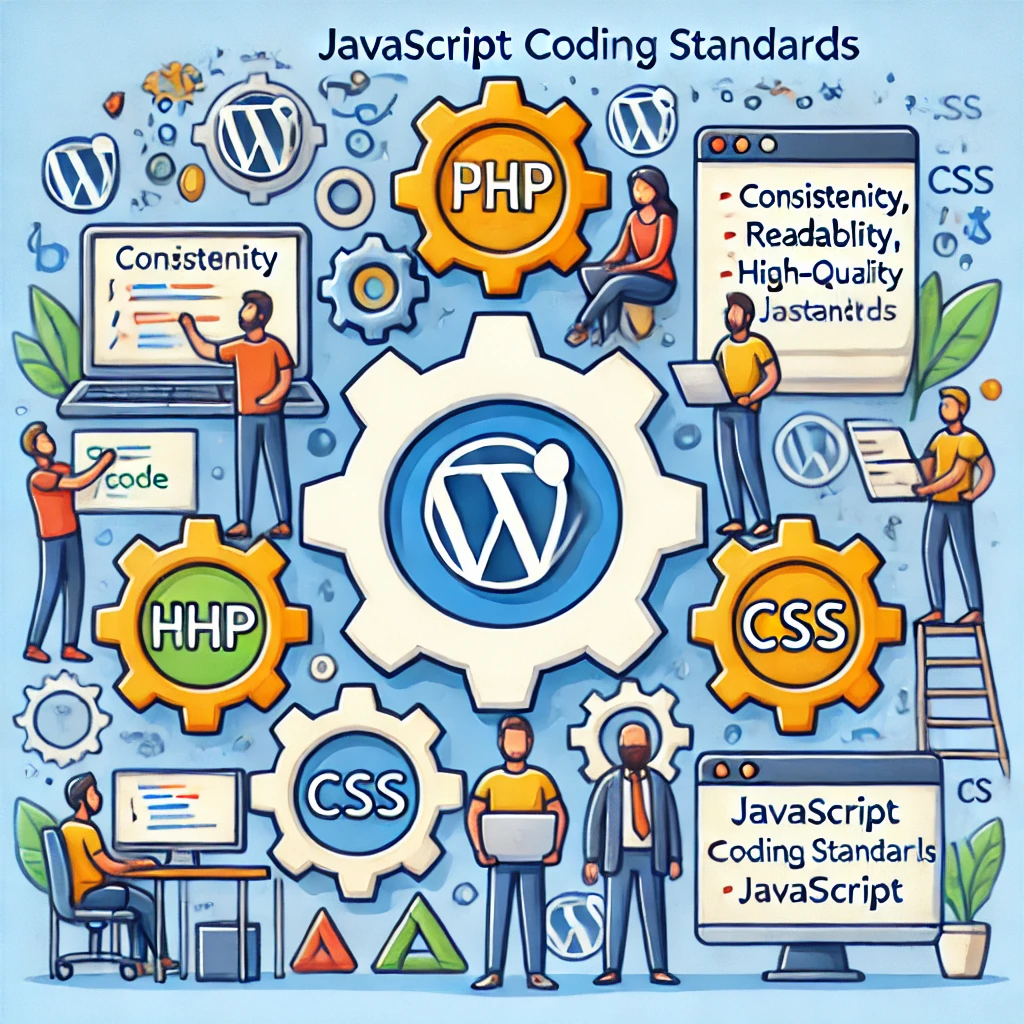
Overview: Building on jQuery’s Foundation
WordPress JavaScript coding standards are derived from the jQuery JavaScript Style Guide, originally introduced in 2012. Although initially aimed at jQuery projects, its success led to widespread adoption beyond the framework. However, WordPress has its take on these standards, which slightly differs from the original jQuery guide.
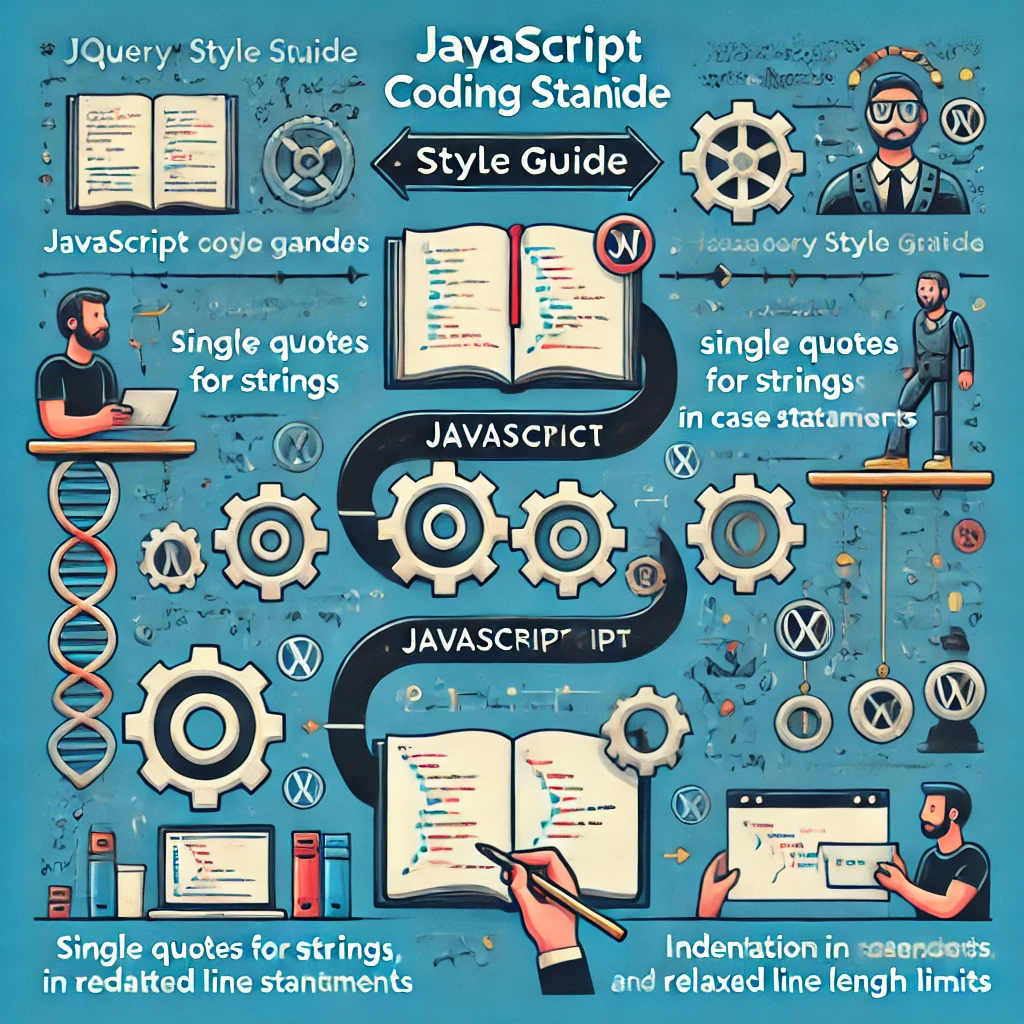
Key differences include:
- Single Quotes for Strings: WordPress prefers single quotes for string declarations.
- Case Statement Indentation: In WordPress, case statements are indented within a switch block.
- Consistent Function Indentation: All content inside a function is indented, including file-wide closure wrappers.
- Relaxed Line Length Limit: While jQuery enforces a 100-character limit per line, WordPress encourages it but does not strictly enforce it.
Core Areas Covered by WordPress JavaScript Standards
1.Code Formatting and Indentation
Proper formatting and indentation are essential for readable and maintainable code. The WordPress standard emphasizes:
- Indentation: Use tabs instead of spaces for indentation. Each logical block should be indented for easy readability. Tabs help maintain consistency, especially when different developers are working on the same codebase.
( function ( $ ) {
// Block expressions are indented
function doSomething() {
// Function code is also indented
console.log( 'Doing something' );
}
} )( jQuery );In the above example, the function doSomething() and its content are indented to show they are part of the IIFE.
In the above example, the function doSomething() and its content are indented to show they are part of the IIFE.
var html = '<p>The sum of ' + a + ' and ' + b + ' is ' + ( a + b ) + '</p>';
elements
.addClass( 'foo' )
.children()
.html( 'hello' )
.end()
.appendTo( 'body' );Here, each method in the chain starts on a new line, making the sequence of operations more readable.
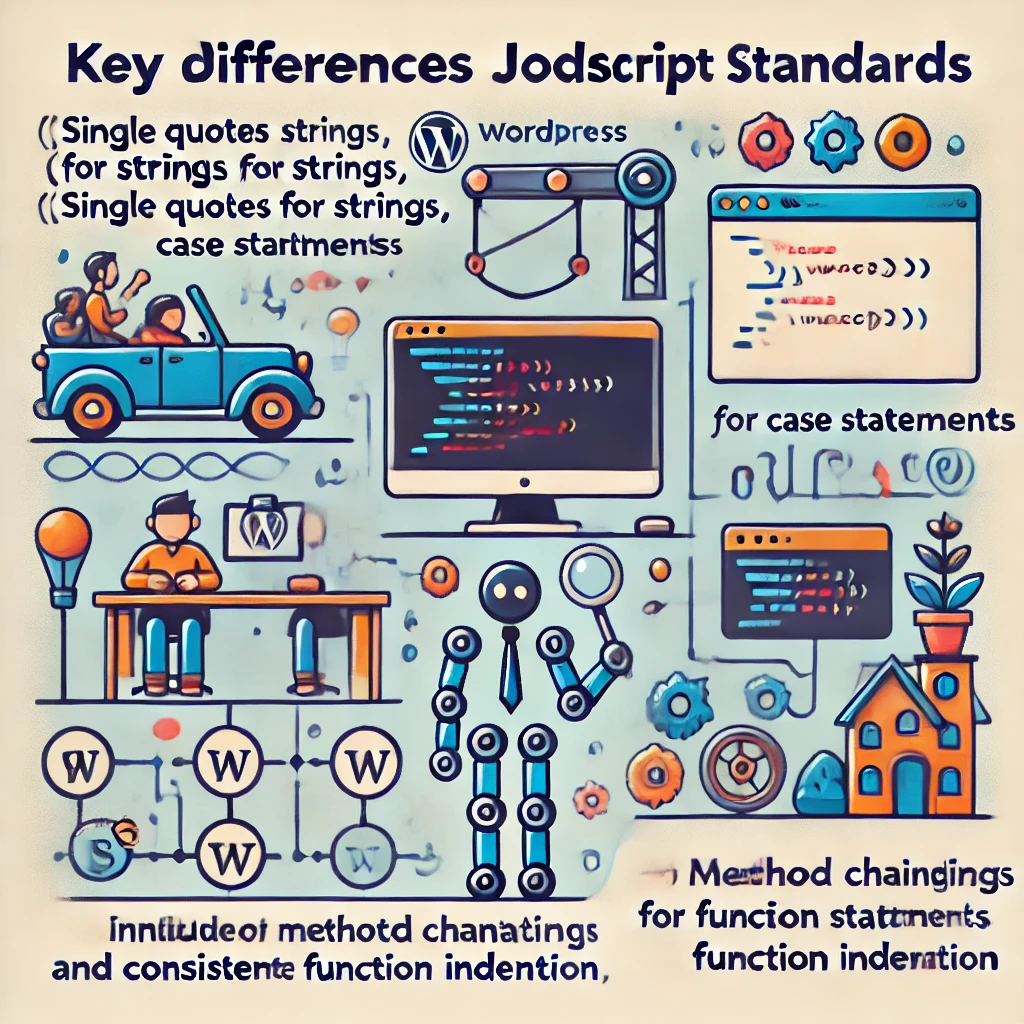
2. Object and Array Spacing
Objects and Arrays: Consistent spacing is crucial for visual clarity, especially when working with complex data structures. Follow these guidelines for spacing:
// Correct way to declare objects
var obj = {
name: 'John',
age: 27,
height: 179
};
// Incorrect way to declare objects (do not condense properties)
var obj = { name: 'John', age: 27, height: 179 };
// Arrays should also follow consistent spacing
var array = [ 1, 2, 3 ];The correct spacing in objects and arrays ensures that your data structure is visually distinct, which helps when debugging or reviewing code.
3. Semicolons
Always use semicolons to terminate statements. Omitting semicolons can lead to unexpected issues during JavaScript’s automatic semicolon insertion (ASI).
var array = [ 1, 2 ];
console.log( 'Hello, world!' );Even though JavaScript can sometimes infer semicolons, it’s best practice to include them explicitly to avoid ambiguities, especially when combining multiple code snippets or contributing to team projects.
4. Variable Declarations: const, let, and var
- Use const for variables whose value will not change. This helps prevent accidental reassignment and makes your intentions clear to other developers.
- Use let for variables whose value might change within a given scope. This ensures the variable is block-scoped, preventing issues related to hoisting.
- **Avoid **var unless necessary, as it has function scope, which can lead to unintended behaviours due to hoisting.
const userName = 'Alice'; // Use const for fixed values
let userAge = 30; // Use let for values that may changeUsing const and let appropriately helps to improve code safety and makes it easier to reason about variable lifetimes.
5. Naming Conventions
Consistent naming conventions make code more readable and maintainable:
- CamelCase: Use camelCase for variable and function names. For example,
userIdorfetchUserData. - Classes: Use UpperCamelCase (PascalCase) for class names.
- Constants: Use SCREAMING_SNAKE_CASE for constants.
const MAX_CONNECTIONS = 5;
class UserProfile {
constructor( name ) {
this.name = name;
}
}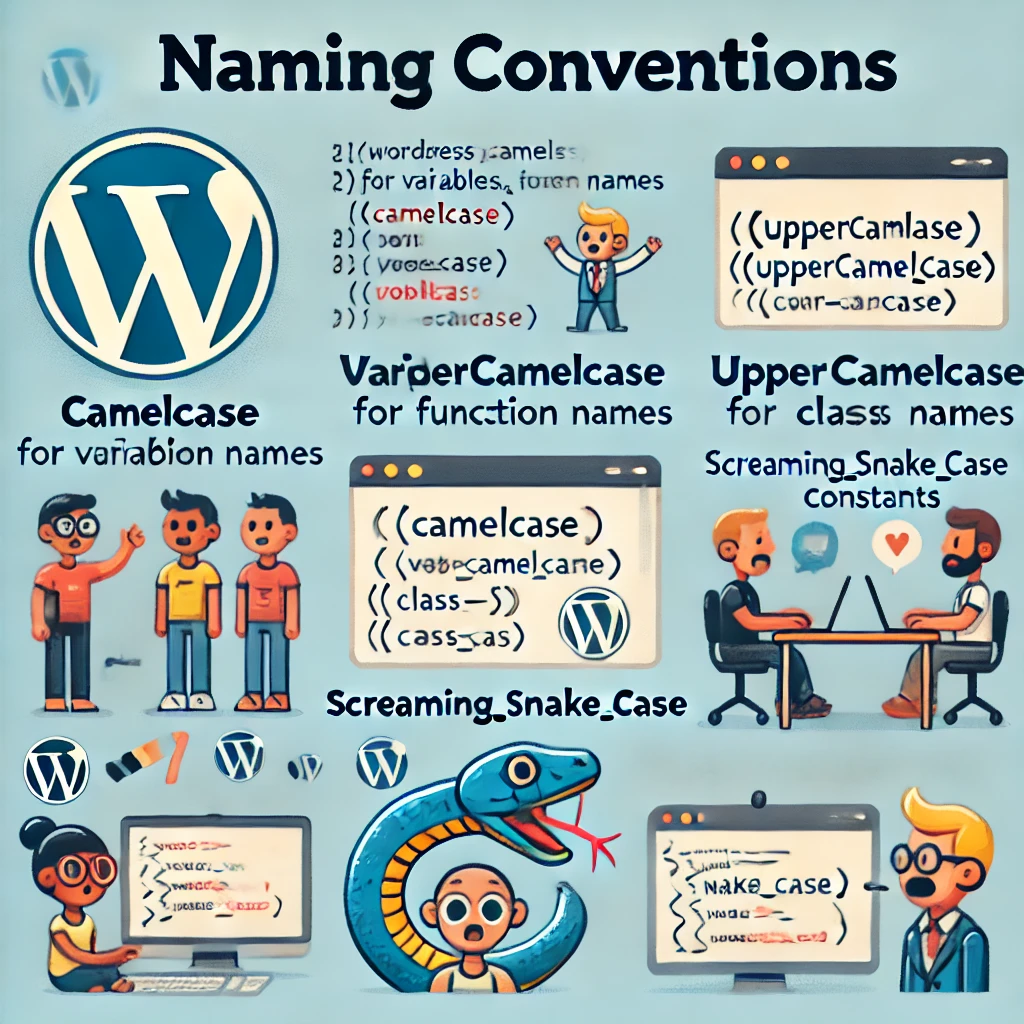
CamelCase for variables and functions helps differentiate them from classes and constants, contributing to better code clarity.
6. Equality Checks
Always use strict equality/inequality (===******** and !==) checks instead of abstract ones (== and !=). This helps avoid unexpected types of coercion that can lead to bugs.
if ( name === 'John' ) {
// Strict equality check
console.log( 'Hello, John!' );
}
if ( result !== false ) {
// Strict inequality check
console.log( 'Result is not false' );
}Strict equality ensures that both the type and value are compared, making your code more predictable.
7. String Handling
Use single quotes for strings unless the string contains a single quote, in which case use double quotes to avoid escaping.
var greeting = 'Hello world!';
var statement = "It's a nice day.";This rule ensures consistency across the codebase, making it easier for developers to follow the same practices.
8. Switch Statements
Switch statements should have a break for each case (except for default) to prevent fall-through errors. Additionally, indent case statements should be in one tab within the switch.
switch ( event.keyCode ) {
case $.ui.keyCode.ENTER:
case $.ui.keyCode.SPACE:
executeFunction();
break;
case $.ui.keyCode.ESCAPE:
cancelFunction();
break;
default:
defaultFunction();
}Proper indentation and using breaks prevent unintended behaviour when multiple cases are met.
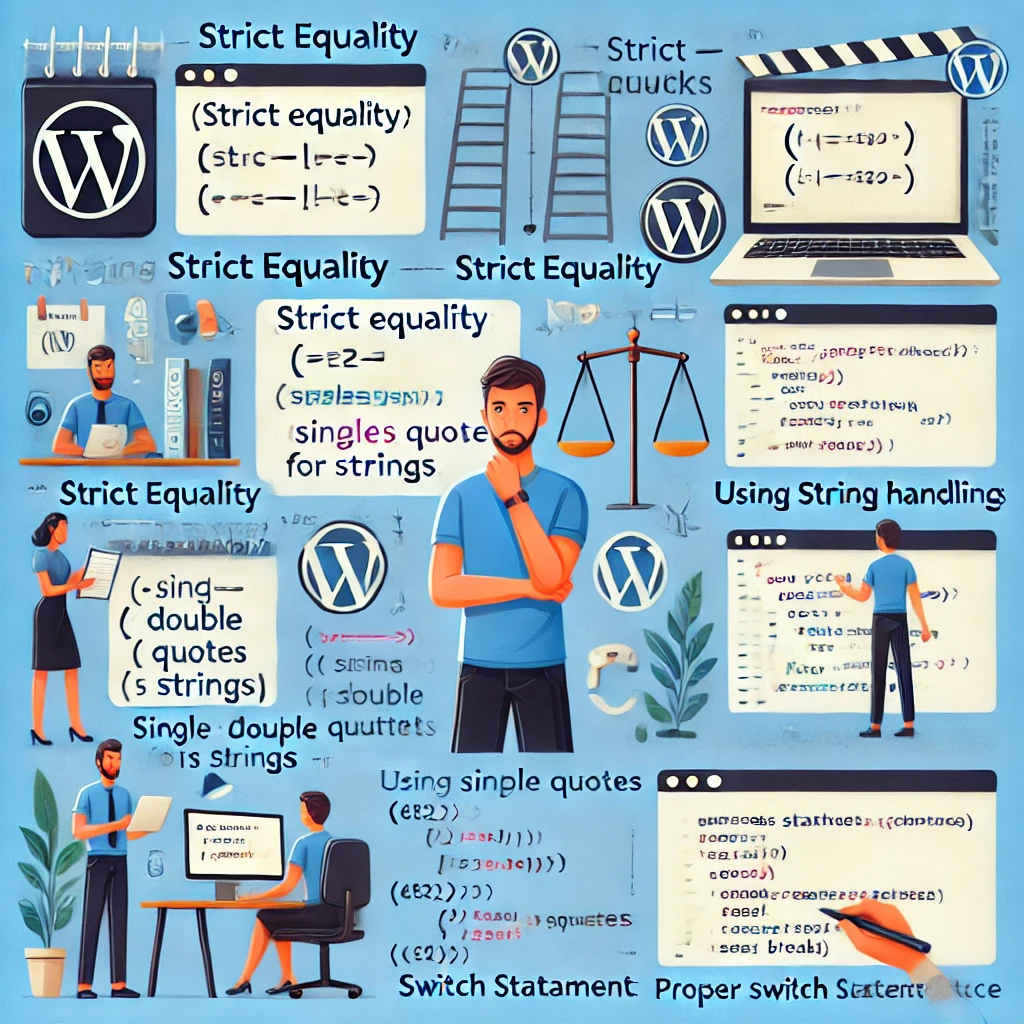
Best Practices in WordPress JavaScript Development
1. Avoid Global Variables
Global variables can lead to namespace pollution and conflicts with other scripts. Instead, encapsulate your code within an Immediately Invoked Function Expression (IIFE) to create a local scope.
( function() {
const localVar = 'Scoped to this function';
// Code here is protected from the global scope
} )();Encapsulating code reduces the risk of conflicts, especially when working in environments with multiple third-party libraries.
2. Documentation and Comments
WordPress follows the JSDoc 3 standard for documenting JavaScript code. Documentation is crucial for understanding the functionality of complex methods, classes, and functions.
- Single-line Comments: Use
//for brief explanations, particularly when describing a specific line of code. - Multi-line Comments: Use
/* */for more detailed explanations or to describe a block of code.
/**
* Adds two numbers together.
*
* @param {number} a - The first number.
* @param {number} b - The second number.
* @return {number} Sum of a and b.
*/
function add( a, b ) {
return a + b;
}Documenting code with JSDoc allows tools to generate documentation automatically and helps developers understand your code without diving deep into the implementation.
3. Error Handling
Use try…catch blocks to handle potential errors gracefully. Error handling ensures that unexpected issues do not cause your entire application to fail.
try {
const data = JSON.parse( jsonString );
} catch ( error ) {
console.error( 'Invalid JSON:', error );
}Proper error handling improves the resilience of your code, making it easier to debug and maintain.
JavaScript Coding Standards in Practice
To make sure your JavaScript code adheres to WordPress standards



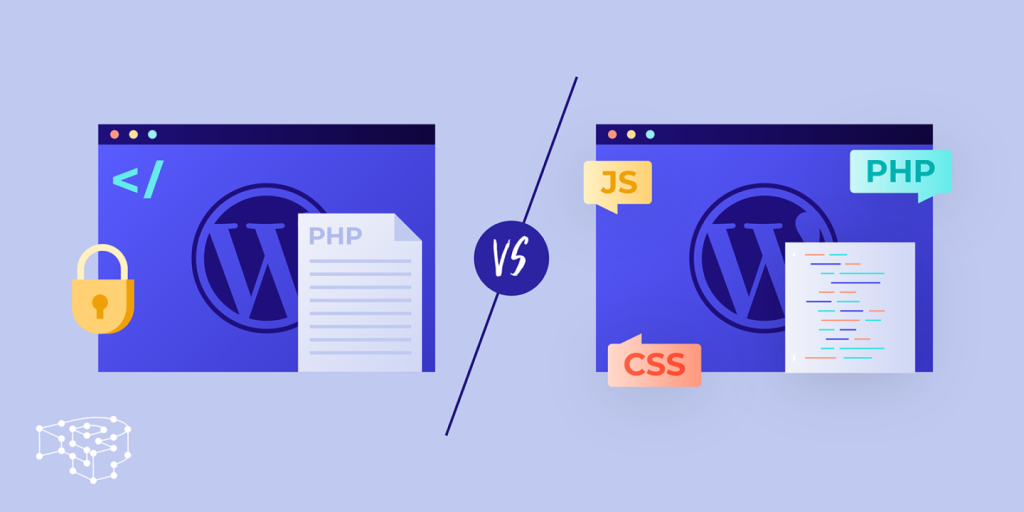

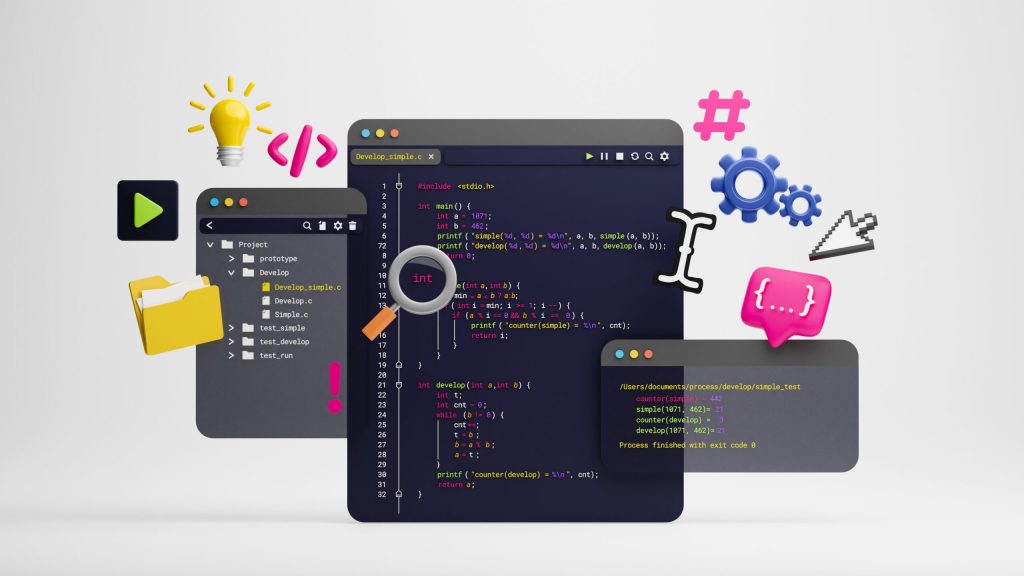


Responses